

 The unpredictable weather and the importance of water
The unpredictable weather and the importance of water
The weather is unpredictable and even more so right now it seems. Admittedly, it is said that farmers (and wine growers are just that) always complain about the weather. But I am beginning to think that they have every right to it. Long periods of drought, abnormal amounts of rain that come over a very short period of time with floods and diseases in the vineyards as a result, violent hailstorms destroying everything in their path,… is nothing unusual today. We have seen all this in France in recent years and also in other countries.
What is worst is hard to say. Different weather challenges strain the wine farmers in different ways. And no matter how inventive you are, there is no protection that is absolutely perfect.
In the Loire, they experiment with a new protection against frost, a tarpaulin, read about it in the Brief. Another new method we just heard about is spraying with pectin and apple.
Another example: drought and irrigation. It is great to be able to take to irrigation when you do not have enough rain. Provided you have access to water. You don’t always have that. The South African wine districts have had several years of severe drought, until recently. The Western Cape, which includes Cape Town and the wine regions, is completely dependent on rainwater for its water supply. Normally, it rains in the winter and the water dams fill up. But during three winters it did not rain and in February 2018 the dams began to look alarmingly empty. With strict water rationing they managed to avoid the worst. And when winter came, it finally started to rain and in September the dams were full enough so that the worst danger could be considered to be over. Now, things are looking better for the South African wine producers.
Rain-free summers are becoming a problem even in southern France and other parts of southern Europe. And the French, like the others, are changing. They start irrigating, a thing that they previously looked down upon. Today you see it both here and there in, for example, the Languedoc. But irrigation has actually been allowed in Europe for many years, which is not so well known. There are, of course, local rules that can prohibit it, and it is more common for simpler wines.
The New World wines could never be as good as the Old World ones, some people used to say in Europe, because they came from irrigated grapes. We know that is not true today. In many parts of the New World, without irrigation grapes could not be grown at all. Today we know that it is better to give the vines a little water rather than to let them be overly stressed by water shortages. The vine is a resistant and adaptable plant but only to a certain limit. It is said that “the vine should suffer” (though it is a doubtful rule of thumb), but it must not go too far.
Then there is the question of how far it is acceptable to go, before it is considered to falsify the original character. A few years ago, some people tried to use tarpaulin against frost in Chablis, but it was quickly forbidden by the INAO because, at the time, it was considered that it manipulated the vines’ immediate environment too much.
Perhaps the recurring frosts and repeated droughts (not to mention hail) have made the rule-makers more liberal, for the benefit of wine producers as well as for us wine consumers. Or does this perhaps corrupt the wine’s original character? No, hardly.
An excellent opportunity to verify that South Africa is still making great wines despite drought, is the wine tour to South Africa’s wine regions in February next year. A wonderful wine country.
When you come on one of our wine tours, you can be sure that you will get the most knowledgeable and insightful wine guide that you can get on a wine tour. Our mission is to make a memorable trip, not to sell wine. We bring you into the world of wine, in the wine regions, for a very special travel experience. Ask our previous travellers if you don’t believe me!
Britt & Per
PS: Recommend to your friends to read the Brief !
What’s on at BKWine Tours
2019
- Champagne, September 11-15, 2019
- Bordeaux, October 2-6, 2019
2020
- Chile and Argentina, January 20 – February 2, 2020
- South Africa, February 15-23, 2020
- New Zealand, March 9-24, 2020
- More to come
For more information please contact us on email or on phone (we’re on French time), or go to our wine travel site on www.bkwinetours.com!
We also make custom designed wine tours – on-demand tours for you and a group of friends, for your company (maybe to scout new winegrowers?), for a special event… We can combine winery visits and wine touring with other activities: gastronomic workshops, visit to an oyster farm, truffles hunting, cheese making, and more. More info on the custom designed and bespoke BKWine wine tours and travel here!
Read our book(s)
We have written several wine books, nine at the last count. One of them has been translated to English; the others are (so far) only available in Swedish. This is the one that is available in English: Biodynamic, Organic and Natural Winemaking, Sustainable Viticulture and Viniculture
All our books are on wine, but on different subjects: wines of the Languedoc, wine growing and wine making, the wines of France, Tuscany, Bordeaux, Piedmont, Burgundy, Champagne. Several have won prestigeous prizes and awards. Read more on our wine books.
From the World of Wine
In Brief
In short, news and stuff from the world of wine.
Yes please, more white wines in the Rhone Valley
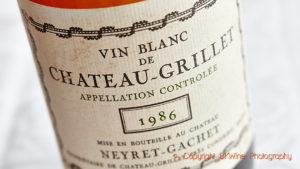 The demand for white wines is increasing. Not least in the Rhone Valley, a region most known for its red wine. But it is a region that also produces magnificent whites with grapes like roussanne, marsanne, viognier, clairette, bourboulenc and grenache blanc. Today, about 80% of the production is red and only 6% is white. But now the producers think it’s time to focus more on white wine. The initiative will start this year. With a new mapping tool (GIS), terroirs that are suitable for white wine will be identified. The goal is that the white wines will eventually constitute 30% of the production.
The demand for white wines is increasing. Not least in the Rhone Valley, a region most known for its red wine. But it is a region that also produces magnificent whites with grapes like roussanne, marsanne, viognier, clairette, bourboulenc and grenache blanc. Today, about 80% of the production is red and only 6% is white. But now the producers think it’s time to focus more on white wine. The initiative will start this year. With a new mapping tool (GIS), terroirs that are suitable for white wine will be identified. The goal is that the white wines will eventually constitute 30% of the production.
Most appellations in both the northern and southern Rhône make a small amount of white wine, around 10-15%. In some cases, such as white Hermitage and white Châteauneuf-du-Pape, the wines are highly sought after and exclusive. A few small AOPs are for white wine only: Saint Péray, Condrieu and Chateau Grillet. Read more vitisphere
Bottling time for 2018, a fantastic vintage in Champagne
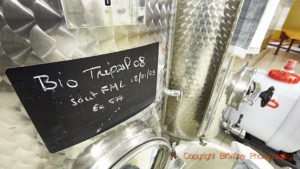 Many wine producers in France are happy with the vintage 2018, a record harvest, not least in Champagne, where many now have started the bottling. Jean-Baptiste Geoffroy at Champagne Geoffroy in Aÿ says that it is a fantastic year, both in volume and quality. Sébastien Mouzon at Champagne Mouzon Leroux in Verzy is also very pleased, but says it was a complicated year to vinify, due to the unusually high sugar levels.
Many wine producers in France are happy with the vintage 2018, a record harvest, not least in Champagne, where many now have started the bottling. Jean-Baptiste Geoffroy at Champagne Geoffroy in Aÿ says that it is a fantastic year, both in volume and quality. Sébastien Mouzon at Champagne Mouzon Leroux in Verzy is also very pleased, but says it was a complicated year to vinify, due to the unusually high sugar levels.
We tasted (on the recent wine tour) the vins clairs, ie the still wines before bottling that one rarely has the opportunity to taste, at Champagne Vincey in Oger. With an alcohol content of an impressive 11.5% (without chaptalization!) they were powerful in aromas and body. After an exceptionally wet winter, the sun and heat came in April and it stayed for the rest of the season with temperatures well above normal. The permitted yield was set at 10,800 kg/ha and the growers could also build up their reserve by harvesting an additional 4,700 kg/ha. (So a total of 15,500 kg/ha, equivalent to 99 hl/ha.) A year like 2018, with both quality and quantity, was welcome after the complicated 2016 and 2017.
Travel: Come on a bubbly wine tour to Champagne this autumn.
2018 in Bordeaux: a challenging year that turned out very good in the end
 The first week in April, the primeur tastings take place in Bordeaux. This means that buyers, importers, wine merchants and journalists come to Bordeaux to taste the latest vintage. We also had the opportunity to try some 2018 when we visited Bordeaux on one of our wine tours recently. Everyone agrees: it is a brilliant vintage. But it was a difficult year. Unlike Champagne, which had both quality and volume, the harvest in Bordeaux was small.
The first week in April, the primeur tastings take place in Bordeaux. This means that buyers, importers, wine merchants and journalists come to Bordeaux to taste the latest vintage. We also had the opportunity to try some 2018 when we visited Bordeaux on one of our wine tours recently. Everyone agrees: it is a brilliant vintage. But it was a difficult year. Unlike Champagne, which had both quality and volume, the harvest in Bordeaux was small.
Between March and June, it rained more or less non-stop. The downy mildew attacks were severe and difficult to handle. From mid-July, however, it became dry and warm and this saved the harvest. But hail caused great damage in some places; in late May in southern Médoc, Bourg, Blaye and Pessac-Léognan and in July in Sauternes.
In the end, the quality was very good but the quantity small and for some chateaux, very small. The wines are well-built with both freshness and structure. They are of course not ready yet. They will stay in barrel for at least another year.
Travel: Come to Bordeaux on a wine tour this autumn.
Can a tarpaulin over the vines protect against frost?
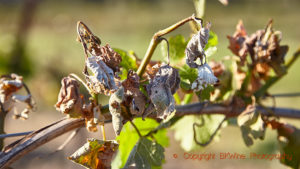 The spring frost has struck again in several places in France. Warm spring weather led to an early budding but then the weather changed again, as it usually does. In the Loire Valley, they are now experimenting with a new way of protecting their vines from spring frost, which can potentially cause major damage. The experiment is to cover the vines with a tarpaulin. If this method works is not yet totally clear. And does the microclimate change under the tarpaulin? Yes, probably. After all, that’s the whole point. The temperature stays higher at night and during the critical morning hours. But it stays higher also in the days, which gives a kind of greenhouse effect. So, the question is whether to keep the tarpaulin on the vines all the time during the critical days? Or having the trouble of rolling it off in daytime and back again in the evenings?
The spring frost has struck again in several places in France. Warm spring weather led to an early budding but then the weather changed again, as it usually does. In the Loire Valley, they are now experimenting with a new way of protecting their vines from spring frost, which can potentially cause major damage. The experiment is to cover the vines with a tarpaulin. If this method works is not yet totally clear. And does the microclimate change under the tarpaulin? Yes, probably. After all, that’s the whole point. The temperature stays higher at night and during the critical morning hours. But it stays higher also in the days, which gives a kind of greenhouse effect. So, the question is whether to keep the tarpaulin on the vines all the time during the critical days? Or having the trouble of rolling it off in daytime and back again in the evenings?
It remains to be seen if this becomes an alternative to other frost fighting methods such as helicopters and propeller towers, water sprinklers, electric cables, candles, burning haystacks and more. Here’s how it looks with a tarpaulin over the vines: mon-viti
Languedoc in great need of irrigation
The department of Hérault accounts for a large part of Languedoc’s wine production. A wine production that may be in danger if they do not increase the irrigation area, they worry. At present, almost 35,000 hectares of the vineyards here are irrigated (of a total of just over 90,000 hectares). A project is now underway to ensure that irrigation will be implemented for approximately an additional 20,000 hectares. The reason for this is that the summers in the region are becoming drier and drier. The vines are weakened and the yields decrease.
However, technical changes and improvements concerning the work in the vineyard are also planned that will make the vines better prepared for dry weather. They will also be experimenting with alternative grape varieties that are resistant to drought.
Languedoc makes a lot of IGP wine and these vineyards are allowed irrigation until August 15. Then they have to stop until after the harvest. Read more vitisphere
International Sauvignon Blanc Day On May 3
Many grapes have their own specific day. So, we were not surprised when we heard that this is also the case with Sauvignon Blanc. The International Sauvignon Blanc Day takes place on the first Friday of May, which this year is May 3. Celebrations starts in New Zealand, of course, and then continues in London, New York, Canada…
The initiative for this Sauvignon Blanc day comes from New Zealand. Despite being a newcomer in the wine world, the country today is a world celebrity thanks to this particular grape. The country produces 17% of all Sauvignon Blanc wines in the world. A fantastic achievement after only a few decades. Read nmore: nzwine
Travel: Do you want to experience Sauvignon Blanc in New Zealand? Join our wine tour in New Zealand in March 2020!
Travel more: But sauvignon blanc is prominent also in other places, as you can discover on the wine tour to Bordeaux.
Features
Features that we have published during the past month, with lots of reading for you.
Water designed specifically to enhance the taste of wine
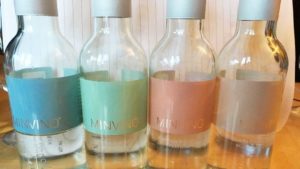 If you put great emphasis on wine and food and how it matches then you might also need to think about what water you choose? This is, in any case, the idea behind the newly started company Minvino. They have launched four different waters, each of which is said to be adapted to a particular wine style.
If you put great emphasis on wine and food and how it matches then you might also need to think about what water you choose? This is, in any case, the idea behind the newly started company Minvino. They have launched four different waters, each of which is said to be adapted to a particular wine style.
BKWine Magazine’s guest writer and sensory expert Mattias Schyberg has dived deep into the waters and how they match different wines. Does it matter what water you have when you drink wine?
Our best selection of the new vintages of Chianti Classico, 2016 and 2017
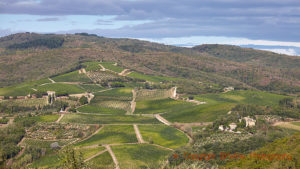 Also Chianti Classico has a “primeur season”, just like Bordeaux. But in Chianti Classico it is perhaps even more interesting because most of the wines are actually finished and bottled, and not the barely-finished-fermenting wines (with some exaggeration) that are shown in Bordeaux, which often have another one or two years in barrel in front of them. Most recently, Chianti Classico presented the vintages 2016 and 2017, two very different vintages, one magnificent vintage and one that offered many challenges.
Also Chianti Classico has a “primeur season”, just like Bordeaux. But in Chianti Classico it is perhaps even more interesting because most of the wines are actually finished and bottled, and not the barely-finished-fermenting wines (with some exaggeration) that are shown in Bordeaux, which often have another one or two years in barrel in front of them. Most recently, Chianti Classico presented the vintages 2016 and 2017, two very different vintages, one magnificent vintage and one that offered many challenges.
BKWine Magazine’s Åsa Johansson tasted most of the 731 wines that were on the tables and she gives you her selection of the best: Chianti Classico Collection: fantastic 2016 and difficult 2017.
Great Portuguese white wines from a little-known wine region, from Anselmo Mendes
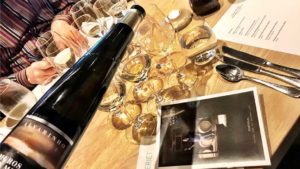 One might primarily think of red wine when thinking of Portugal, but there are also great white wines here. Anselmo Mendes is one of the most successful ambassadors for Portuguese white wines, with great elegance. He makes wine in northern Portugal, north of the Douro river port, mainly from the alvarinho grape.
One might primarily think of red wine when thinking of Portugal, but there are also great white wines here. Anselmo Mendes is one of the most successful ambassadors for Portuguese white wines, with great elegance. He makes wine in northern Portugal, north of the Douro river port, mainly from the alvarinho grape.
Read more about these wines, popular in many markets in the world, in Sven-Olof Johansson’s article on BKWine Magazine: “With Anselmo Mendes coming spring”, with alvarinho from Portugal.
Big dreams and big wines with pinot noir from California
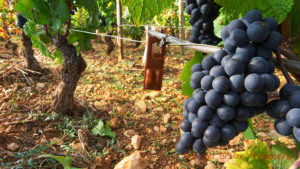 “The California Wine Tasting was a big event with no less than 135 wine producers present. The title chosen for the event, Dream Big, promised a lot. One had better set priorities and my priority was to focus on pinot noir from as many interesting producers as possible. Why then pinot noir? It happens to be a favourite grape of mine and earlier tastings of Oregon wines have created a desire to taste more wines made from this grape from the American West Coast. California has previously shown ambitions in the area and I was looking forward to testing how the development looked.”
“The California Wine Tasting was a big event with no less than 135 wine producers present. The title chosen for the event, Dream Big, promised a lot. One had better set priorities and my priority was to focus on pinot noir from as many interesting producers as possible. Why then pinot noir? It happens to be a favourite grape of mine and earlier tastings of Oregon wines have created a desire to taste more wines made from this grape from the American West Coast. California has previously shown ambitions in the area and I was looking forward to testing how the development looked.”
Read more on BKWine Magazine in Carl-Erik Kanne’s article: Dream Big! Pinot noir from California, selected producers.
A Tuscan double, Monteraponi and Montevertine present their new vintages
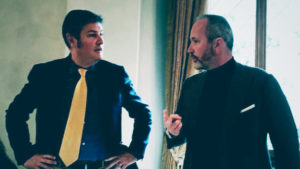 Every year, when the two wine estates Montevertine and Monteraponi in Radda in Chianti present their new vintages, it is a celebration. A Sangiovese celebration. For if there’s something they’re good at, Martino Manetti and Michele Braganti with their other halves Liviana Midollini and Alessandra Deiana, it is to make fantastic wines from the king of Tuscany’s grapes.
Every year, when the two wine estates Montevertine and Monteraponi in Radda in Chianti present their new vintages, it is a celebration. A Sangiovese celebration. For if there’s something they’re good at, Martino Manetti and Michele Braganti with their other halves Liviana Midollini and Alessandra Deiana, it is to make fantastic wines from the king of Tuscany’s grapes.
BKWine Magazine’s reporter Åsa Johansson explores the three latest vintages from these two producers in Chianti: Contrasting vintages, 2017, 2016, 2015, from Monteraponi and Montevertine in Tuscany.
“No thanks, not Chardonnay, but yes please, a glass of chablis”
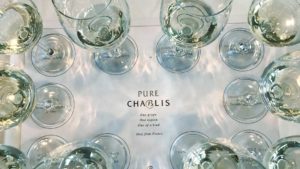 The wine producers in Chablis love the Swedes and the Swedes love Chablis. So it is. Eight percent of the production in Chablis is gobbled up in a Swedish home, in the sailboat, on the beach or on a picnic. Although the wine producer himself may have a moderate interest in geography, Sweden, thanks to its annual consumption of 1.6 million bottles of chablis, is stuck on the map. We come in fourth place after England, USA and Japan. Chablis is never unfashionable. Chablis is perhaps never fashionable either but it is an obvious feature of the dietary circle.
The wine producers in Chablis love the Swedes and the Swedes love Chablis. So it is. Eight percent of the production in Chablis is gobbled up in a Swedish home, in the sailboat, on the beach or on a picnic. Although the wine producer himself may have a moderate interest in geography, Sweden, thanks to its annual consumption of 1.6 million bottles of chablis, is stuck on the map. We come in fourth place after England, USA and Japan. Chablis is never unfashionable. Chablis is perhaps never fashionable either but it is an obvious feature of the dietary circle.
Read more on BKWine Magazine in Sven-Olof Johansson’s article: Good and great from Chablis, from petit to grand cru.
A complicated vintage in Brunello di Montalcino shows the importance of talent
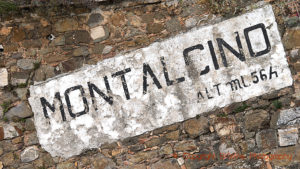 2014 is one of the most difficult vintages in memory in Brunello di Montalcino. It was the year when northern Europe enjoyed sun while the Italian summer was more like in Scotland. Rain, rain and rain. Add cold and ta da: you have the vintage 2014 in a nutshell. Brunello di Montalcino 2014 reflects the expectations most of us had before we sat down to taste through hundreds of wines from the area during the launch tasting – prima – which took place in Montalcino in February.
2014 is one of the most difficult vintages in memory in Brunello di Montalcino. It was the year when northern Europe enjoyed sun while the Italian summer was more like in Scotland. Rain, rain and rain. Add cold and ta da: you have the vintage 2014 in a nutshell. Brunello di Montalcino 2014 reflects the expectations most of us had before we sat down to taste through hundreds of wines from the area during the launch tasting – prima – which took place in Montalcino in February.
We give you here BKWine Magazine’s reporter Åsa Johansson’s selection of some of the best wines, in this difficult vintage: Brunello di Montalcino 2014, a selection of the best.
Good wine year in 2018: record harvest, good consumption, stable plantings
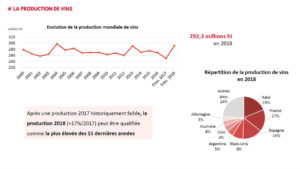 The brand new numbers for 2018 show a positive picture. Wine production reached a record level in 2018 reaching 293 million hectolitres, a good recovery from a catastrophic 2017. The biggest wine producers in the world in 2018 are Italy, France, Spain and the USA. Global vineyard surface remained stable with Spain having the world’s biggest vineyard, China in second place, followed by France. Global consumption was also stable in 2018, following the rapid growth we have seen since the early 2000s. The USA is solidly in the lead as the biggest market / biggest wine consumer, followed by France, Italy and Germany. World trade in wine continues to expand and has more than doubled since the early 2000s. China surprised in 2018 with declining wine production and declining wine consumption.
The brand new numbers for 2018 show a positive picture. Wine production reached a record level in 2018 reaching 293 million hectolitres, a good recovery from a catastrophic 2017. The biggest wine producers in the world in 2018 are Italy, France, Spain and the USA. Global vineyard surface remained stable with Spain having the world’s biggest vineyard, China in second place, followed by France. Global consumption was also stable in 2018, following the rapid growth we have seen since the early 2000s. The USA is solidly in the lead as the biggest market / biggest wine consumer, followed by France, Italy and Germany. World trade in wine continues to expand and has more than doubled since the early 2000s. China surprised in 2018 with declining wine production and declining wine consumption.
Read more on BKWine Magazine for more fascinating statistics in Per’s article: World wine production reaches record level in 2018, consumption is stable.
Exceptional champagnes from small growers give you more bang for the buck
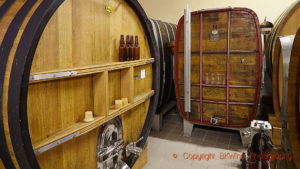 There are around 3000 small champagne producers, growers and similar, but only about 300 so-called “houses”. The “houses” are the big, well-known brands but it is mainly among the others, the small producers that you today find the most exciting champagnes. The market is of course dominated by the marketing-driven big and famous brands but if you want to have a great champagne experience you often get more character packed in a bottle from the growers.
There are around 3000 small champagne producers, growers and similar, but only about 300 so-called “houses”. The “houses” are the big, well-known brands but it is mainly among the others, the small producers that you today find the most exciting champagnes. The market is of course dominated by the marketing-driven big and famous brands but if you want to have a great champagne experience you often get more character packed in a bottle from the growers.
BKWine Magazine’s reporter Sven-Olof Johansson went on a voyage of discovery among what Franska Vinlistan, a specialist importer, offers and found many goodies: Delicious growers and small-house champagnes from a specialist importer.
Travel: Come on a bubbly wine tour to Champagne this autumn.
Popular zinfandel has big brothers if you want to upgrade
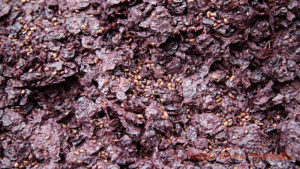 Seghesio is a wine producer in northern California, in Healdsburg. The vineyard was established in 1895 by Italian immigrants. The first grapes they planted were zinfandel. It is this grape that has become Seghesio’s signature. In the beginning they did not make wine themselves but sold grapes to other winemakers in California. This was changed in the early 80s when the fourth generation of Seghesio, Ted, began producing wine under his own name.
Seghesio is a wine producer in northern California, in Healdsburg. The vineyard was established in 1895 by Italian immigrants. The first grapes they planted were zinfandel. It is this grape that has become Seghesio’s signature. In the beginning they did not make wine themselves but sold grapes to other winemakers in California. This was changed in the early 80s when the fourth generation of Seghesio, Ted, began producing wine under his own name.
Read more on BKWine Magazine in Tobias Karlsson’s article: Seghesio, from Italy to California with a focus on Zinfandel.
Wine tours
Some information about current and future wine tours with BKWine.
Champagne is prestige but also magnificent wines | wine tour
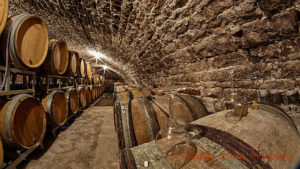 People all over the world drink more and more sparkling wine. Everything is not champagne, far from it. Champagne accounts for 15% of the volume but 40% of the value. Champagne is prestige, champagne has a special aura, and why it is so you will understand better when you are there. We will taste many absolutely fantastic champagnes, some extraordinary wines. We will also enjoy some lovely lunches with top-quality champagne all through the meal. Quite an experience! This is a busy time in the vineyards and in the cellars which makes it even more interesting for us.
People all over the world drink more and more sparkling wine. Everything is not champagne, far from it. Champagne accounts for 15% of the volume but 40% of the value. Champagne is prestige, champagne has a special aura, and why it is so you will understand better when you are there. We will taste many absolutely fantastic champagnes, some extraordinary wines. We will also enjoy some lovely lunches with top-quality champagne all through the meal. Quite an experience! This is a busy time in the vineyards and in the cellars which makes it even more interesting for us.
Read more about the Champagne wine tour, 11-15 September 2019. Book now!
Prestige chateaux and family vineyards in Bordeaux | wine tour
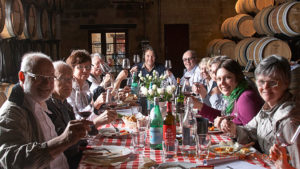 On the Bordeaux wine tour we will visit Medoc, Saint Emilion, Sauternes and other famous appellations. You will see some luxurious show-piece chateau but also “the real” Bordeaux where a family runs the vineyard and live in the so-called chateau. The harvest is either in full swing or has just finished so there will be a lot of exciting activities in the cellars. Our lunches will be high-quality meals, star-chef level, but in private at the chateaux with matching wines. Bordeaux is a must for a wine lover, at least once in a lifetime.
On the Bordeaux wine tour we will visit Medoc, Saint Emilion, Sauternes and other famous appellations. You will see some luxurious show-piece chateau but also “the real” Bordeaux where a family runs the vineyard and live in the so-called chateau. The harvest is either in full swing or has just finished so there will be a lot of exciting activities in the cellars. Our lunches will be high-quality meals, star-chef level, but in private at the chateaux with matching wines. Bordeaux is a must for a wine lover, at least once in a lifetime.
Read more about the Bordeaux wine tour 2-6 October 2019. Book now!
Two neighbouring countries, so close but so different, the wine tour to Chile and Argentina
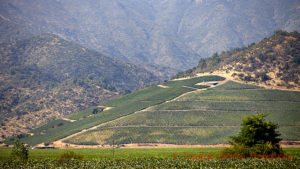 We start in Buenos Aires, this vibrant metropolis where Europe and America blend in an original and exciting way, a city that feels like a mix between Paris and Milan. We finish in the Chilean capital Santiago which is much more North American in style. In between, we have experienced tango, Mendoza, Casablanca, Vina del Mar, Valparaiso, Santa Cruz, Colchagua, Apalta and of course lots of wines. Today, the wine producers here are looking for the best expression of terroir, and the best locations for different grape varieties. The quality is amazing. Our road-trip by bus across the magnificent Andes is also unforgettable.
We start in Buenos Aires, this vibrant metropolis where Europe and America blend in an original and exciting way, a city that feels like a mix between Paris and Milan. We finish in the Chilean capital Santiago which is much more North American in style. In between, we have experienced tango, Mendoza, Casablanca, Vina del Mar, Valparaiso, Santa Cruz, Colchagua, Apalta and of course lots of wines. Today, the wine producers here are looking for the best expression of terroir, and the best locations for different grape varieties. The quality is amazing. Our road-trip by bus across the magnificent Andes is also unforgettable.
Chile-Argentina, January 20 – February 2, 2020. Book your wine tour to South America, with Chile and Argentina, now!
Quality wine pioneers in South Africa on the wine tour in February
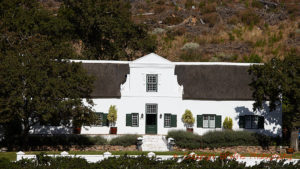 South Africa is wine-wise considered to be in the New World, but it is a New World country with a long wine history. In 1655, the first vines were planted, just outside of Cape Town, so they actually make wine here for longer than in many parts of Bordeaux. The sweet wines from Constantia were world famous already in the 18th century. Today, the quality is on top again and South Africa is today a fantastic wine country to explore. They experiment with different grape varieties and plant vineyards in new regions. The world-class South African wines are actually not that well-known, many have yet to discover them. Maybe because they are not so easy to find abroad. Come and on this tour and be one of the pioneers. Even though the wine is the centre piece of the tour, there is also some sightseeing, for instance to the Cape of Good Hope and to Table Mountain.
South Africa is wine-wise considered to be in the New World, but it is a New World country with a long wine history. In 1655, the first vines were planted, just outside of Cape Town, so they actually make wine here for longer than in many parts of Bordeaux. The sweet wines from Constantia were world famous already in the 18th century. Today, the quality is on top again and South Africa is today a fantastic wine country to explore. They experiment with different grape varieties and plant vineyards in new regions. The world-class South African wines are actually not that well-known, many have yet to discover them. Maybe because they are not so easy to find abroad. Come and on this tour and be one of the pioneers. Even though the wine is the centre piece of the tour, there is also some sightseeing, for instance to the Cape of Good Hope and to Table Mountain.
South Africa, February 15-23, 2020. Book your wine tour to South Africa now!
Surprising wines and grandiose landscapes on the New Zealand wine tour
Our trip to New Zealand is a lovely “road tri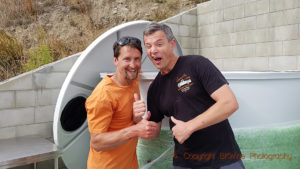 p” that takes us by bus from Auckland on the North Island down to Queenstown in beautiful Central Otago on the South Island. For 16 days we will get acquainted with most of the New Zealand wine regions. We also have time to enjoy the landscape and the nature in this magnificent country, far away from everything. New Zealand is a country that surprises. It is much, much more than just sauvignon blanc and pinot noir. It is even a more spectacular nature experience than what one expects, which is not to say little.
p” that takes us by bus from Auckland on the North Island down to Queenstown in beautiful Central Otago on the South Island. For 16 days we will get acquainted with most of the New Zealand wine regions. We also have time to enjoy the landscape and the nature in this magnificent country, far away from everything. New Zealand is a country that surprises. It is much, much more than just sauvignon blanc and pinot noir. It is even a more spectacular nature experience than what one expects, which is not to say little.
New Zealand, March 9-24, 2020. Book your wine tour to New Zealand now!
Don’t be an egoist! Share with your friends and other wine enthusiasts! Forward the Brief to your friends! Suggest that they sign up for a free subscription !
© Copyright BKWine








